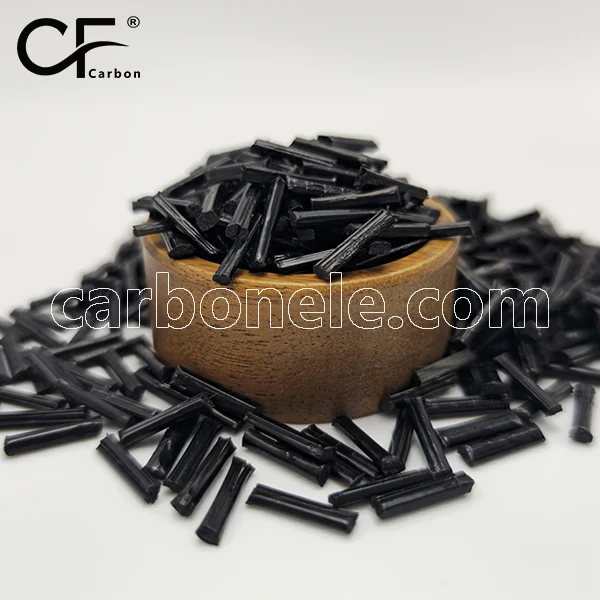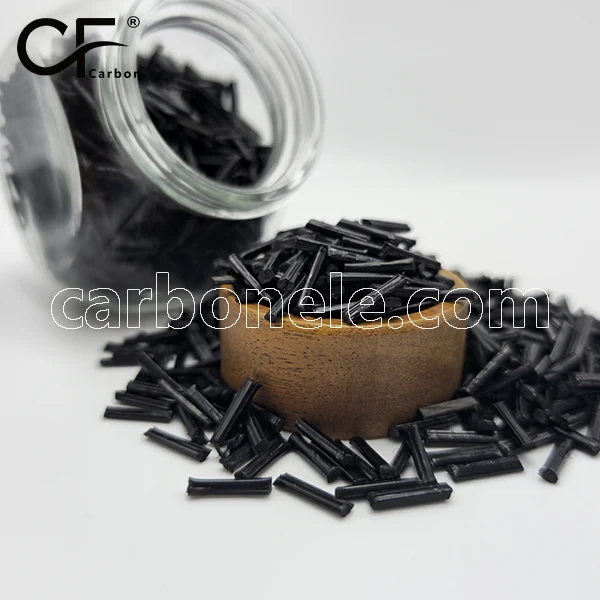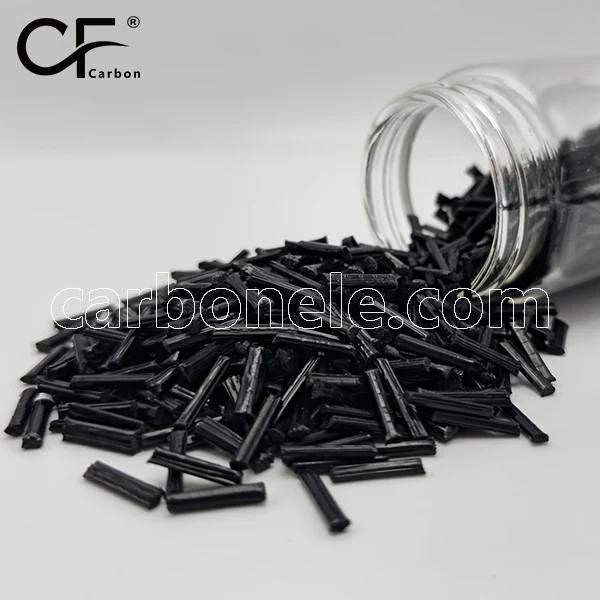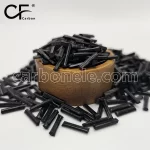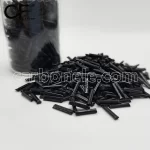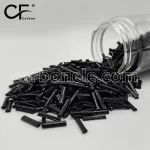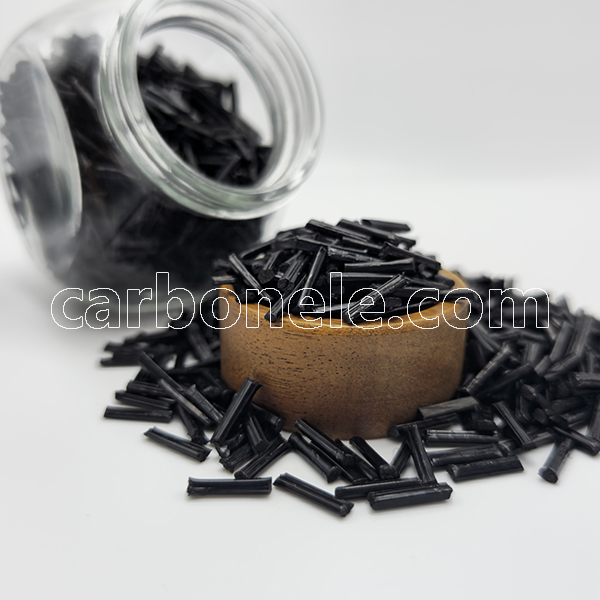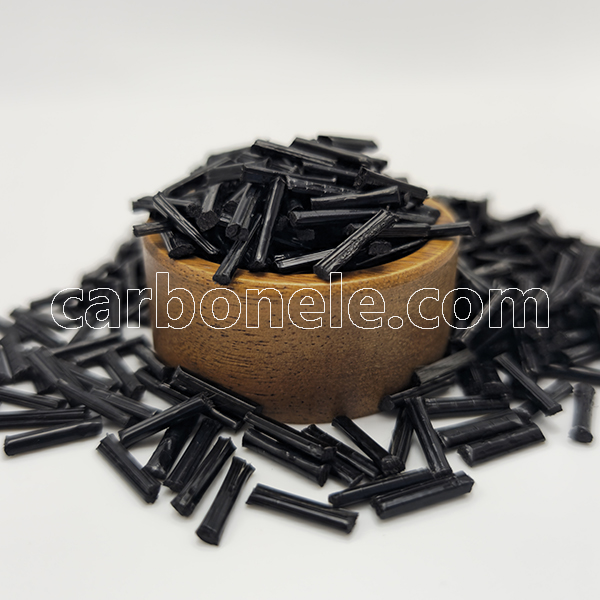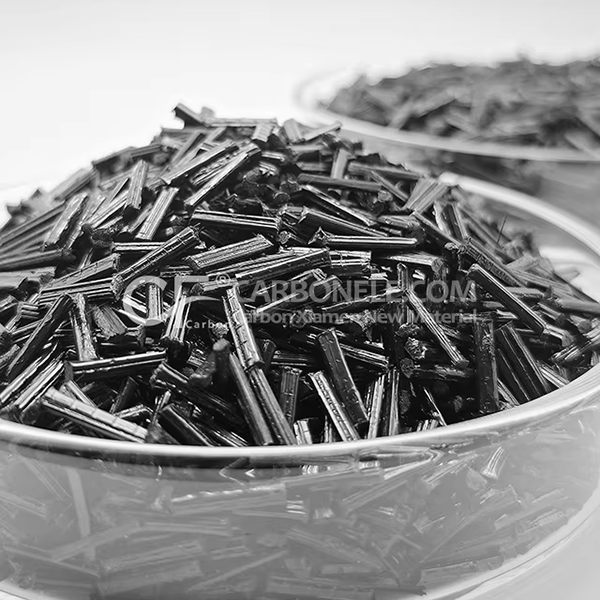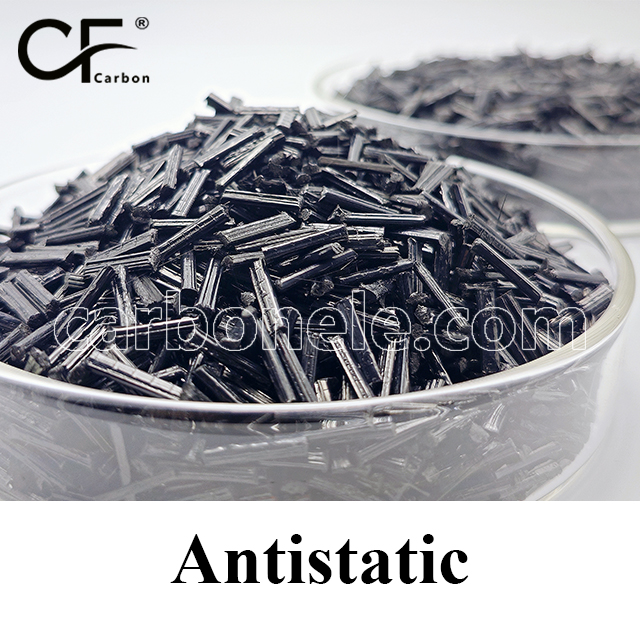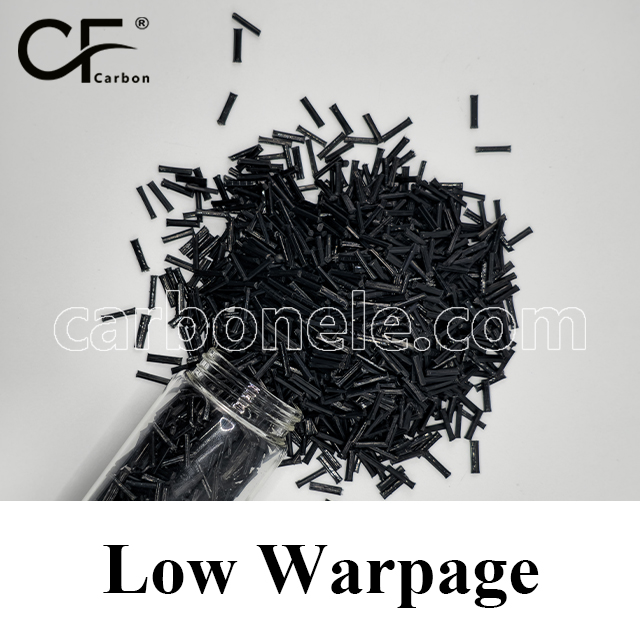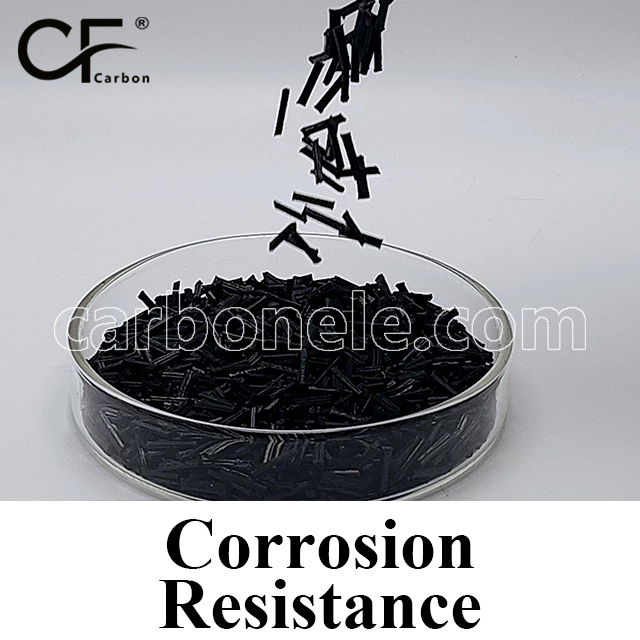
Thermoplastic LCF30-PA66 Material Particles for UAV Components
1: 210 MPa tensile strength value
2: 9500 MPa flexural modulus rating
3: 0.3%-0.6% low shrinkage rate
4: 255°C heat deflection temperature
5: Excellent wear resistance property
- Manufacturer: Carbon New Material
- OEM/ODM: Acceptable
- Color: Black
- Free samples: ≤10kg
- MOQ: 100kg
- Port: Xiamen
- Model: PA66-LCF-BCA3
- Fillers: SCF
I. CF30-PA66 Material Overview
LCF30-PA66 engineering-grade thermoplastic composite combines polyamide 66 (PA66) with 30% long carbon fiber (LCF) reinforcement. This specific formulation delivers an optimal balance of structural integrity and processing efficiency, making it particularly suitable for applications where weight reduction and performance cannot be compromised.
II. Key Properties of LCF30-PA66
1. Superior Strength and Stiffness
With a tensile strength reaching 210 MPa and a flexural modulus of 9500 MPa, it provides the robust framework needed for critical UAV Components under demanding operational stress.
2. Enhanced Fatigue Resistance
The material withstands prolonged cyclic loading, a critical factor for drone parts subjected to constant vibration, ensuring long-term operational reliability.
3. Minimal Warpage and Shrinkage
Exhibiting a low shrinkage rate of 0.3%-0.6%, it allows for the production of high-precision parts with tight tolerances, essential for complex UAV Components.
4. High Heat Deflection Temperature
A HDT of 255°C (1.82 MPa) ensures dimensional stability and performance retention in the elevated temperature environments typical near drone power systems.
5. Excellent Wear Resistance
The low coefficient of friction and high wear resistance make it ideal for moving parts like gears and bearings within unmanned aerial systems.
III. Primary Applications
The LCF30-PA66 material is extensively used in automotive, industrial machinery, and high-performance sporting goods. Its most significant impact is in the aerospace sector, particularly for manufacturing essential UAV Components such as structural frames, motor mounts, landing gear, and gimbal supports, where its strength-to-weight ratio is crucial.
IV. LCF30-PA66 in UAV Motor Mounts
The motor mount is a critical interface, connecting the propulsion unit to the airframe. It demands exceptional mechanical properties to handle thrust forces and vibrations. Thermoplastic LCF30-PA66 Material Particles are the preferred choice for injection molding these components. The resulting mounts are not only lightweight but also exhibit the high rigidity and low creep necessary to maintain precise motor alignment at high RPMs, effectively dampening vibrations and significantly enhancing overall drone durability and flight performance.
For detailed technical data sheets, further product information, a quote, or a catalog, our team is ready to assist you. It’s important to understand that the final properties of carbon fiber-reinforced thermoplastics can vary. Differences in the base polymer, the percentage and type of carbon fiber, and the manufacturing process all contribute to the performance profile. We recommend evaluating materials against your specific application requirements and comparing them with alternative composites to determine the best solution for your project.
Surface Resistivity Comparison
Conductors < 10⁵ Ω/sq. Antistatic Materials 10⁵ ~ 10¹² Ω/sq. Insulators > 10¹² Ω/sq. Static-Dissipative 10⁶ ~ 10¹¹ Ω/sq. *Key Influencing Factors Humidity: Increased moisture can reduce resistivity (e.g., in polymers). Temperature: Affects carrier mobility (↑ heat may lower semiconductor resistivity). Surface Contamination: Dust/oils alter readings significantly. Additives: Carbon black, metallic fillers can lower resistivity. *Applications Electronics: Antistatic materials (10⁶–10⁹ Ω/sq) prevent electrostatic discharge (ESD). Aerospace: Composites must control resistivity to avoid charge buildup. Medical Devices: Insulating materials (>10¹² Ω/sq) ensure patient safety. *Examples Polypropylene (PP): ~10¹⁶ Ω/sq (excellent insulator). Carbon Fiber Composites: 10³–10⁶ Ω/sq (static dissipation). ESD Flooring: 10⁶–10⁹ Ω/sq.
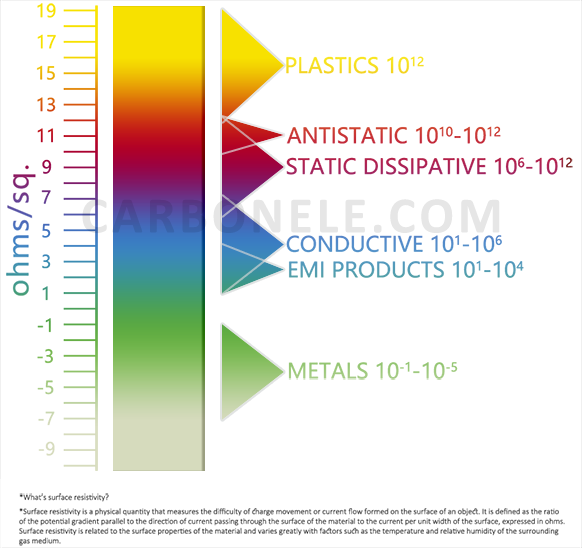
Get to Know Carbon Fibers
The table presents key performance data of carbon fiber grades. T300, with a tensile strength of 3530 MPa and a tensile modulus of 230 GPa, has a relatively low tensile elongation at break of 1.5% and a body density of 1.76 g/cm³. As the grade increases, for example, T700S shows an enhanced tensile strength of 4900 MPa compared to T300, while maintaining the same tensile modulus but with a higher elongation at break of 2.1%. T800S and T1000G both have a tensile modulus of 294 GPa, and their tensile strengths are 5880 MPa and 6370 MPa respectively. T1100G stands out with the highest tensile strength of 7000 MPa and a tensile modulus of 324 GPa. Generally, with the increase in product grade, the tensile strength and modulus tend to rise, while the density remains relatively stable around 1.8 g/cm³.

How to Buy?
If you want to obtain information such as product specifications, performance, and price, choose a suitable product according to your own needs. Meanwhile, you can ask the manufacturer to provide samples for testing to ensure that the material meets your usage requirements. If you are interested in purchasing this composite material, please contact the manufacturer Carbon (Xiamen) New Material directly.
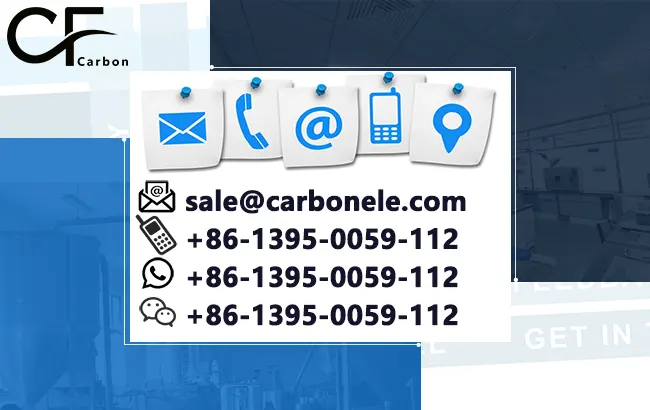
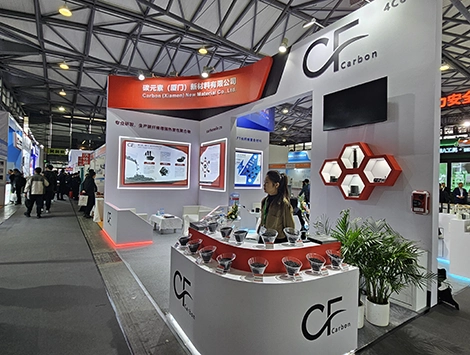

Frequently Asked Questions
Carbon (Xiamen) New Material Co., Ltd. aims to provide buyers with "one-stop" worry-free high-quality services. Here you can find all information about carbon fiber engineering plastics. If you still have questions, please send us an email for consultation!
-
How can I contact the manufacturer of a product that interests me?
When you find a product you are interested in, you can contact the manufacturer directly by sending an email and we will get back to you as soon as possible.
-
How do I find the products that interest me?
All you need to do is enter the keyword, product name in the search window and press the Enter key on your keyboard. Your search results page will then be displayed. You can also search within the product category pages on the home page. Each category is divided into subcategories, allowing you to refine your search and find products that interest you.
-
Where will I find a buying guide?
Please contact our after-sales service directly and we will provide you with a comprehensive operating guide.
-
What are CF Reinforced Thermoplastic Composites?
CF Reinforced Thermoplastic Composites are materials where carbon fibers are incorporated into a thermoplastic matrix. They combine the strength and stiffness of carbon fibers with the processability and recyclability of thermoplastics. For instance, they are used in automotive parts like bumper beams.
-
What are the benefits of CF Reinforced Thermoplastic Composites over traditional composites?
The key benefits include faster production cycles, easier recyclability, and better impact resistance. They also offer design flexibility. An example is in the manufacturing of consumer electronics casings where complex shapes can be achieved more easily.
-
How are CF Reinforced Thermoplastic Composites processed?
Common processing methods include injection molding, extrusion, and compression molding. Injection molding is widely used for mass production. For example, in the production of small components for the medical industry.
-
What industries use CF Reinforced Thermoplastic Composites?
They are utilized in aerospace, automotive, medical, and sports equipment industries. In aerospace, they can be found in interior components. In the medical field, they might be used in prosthetics.
-
How does the carbon fiber content affect the properties of the composites?
Higher carbon fiber content generally leads to increased strength and stiffness but may reduce ductility. A moderate content is often balanced for specific applications. For example, a higher content might be preferred in structural parts of a race car.
-
What are the challenges in using CF Reinforced Thermoplastic Composites?
Challenges include higher material costs, complex processing equipment requirements, and ensuring uniform fiber dispersion. Issues with adhesion between the fibers and the matrix can also arise. An example is in achieving consistent quality in large-scale production.







